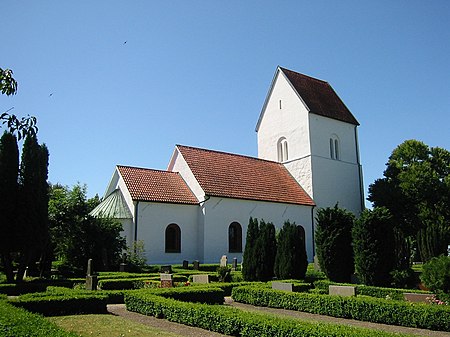Lilla Harrie
Cities and towns in the Øresund RegionPages with Swedish IPAPopulated places in Kävlinge MunicipalityPopulated places in Skåne County

Lilla Harrie (Swedish pronunciation: [ˈlɪ̂lːaˌharːɪɛ]) is a locality situated in Kävlinge Municipality, Skåne County, Sweden with 371 inhabitants in 2010.Here is situated Lilla Harrie Valskvarn, Sweden's oldest mill still in existence, founded in 1509 and bought by the archbishop. The purchase was approved and thereby registered. It is believed that the mill is much older.
Excerpt from the Wikipedia article Lilla Harrie (License: CC BY-SA 3.0, Authors, Images).Lilla Harrie
Fredriksrovägen, Kävlinge kommun
Geographical coordinates (GPS) Address Nearby Places Show on map
Geographical coordinates (GPS)
| Latitude | Longitude |
|---|---|
| N 55.8 ° | E 13.2 ° |
Address
Fredriksrovägen 43-34
241 92 Kävlinge kommun
Sweden
Open on Google Maps









